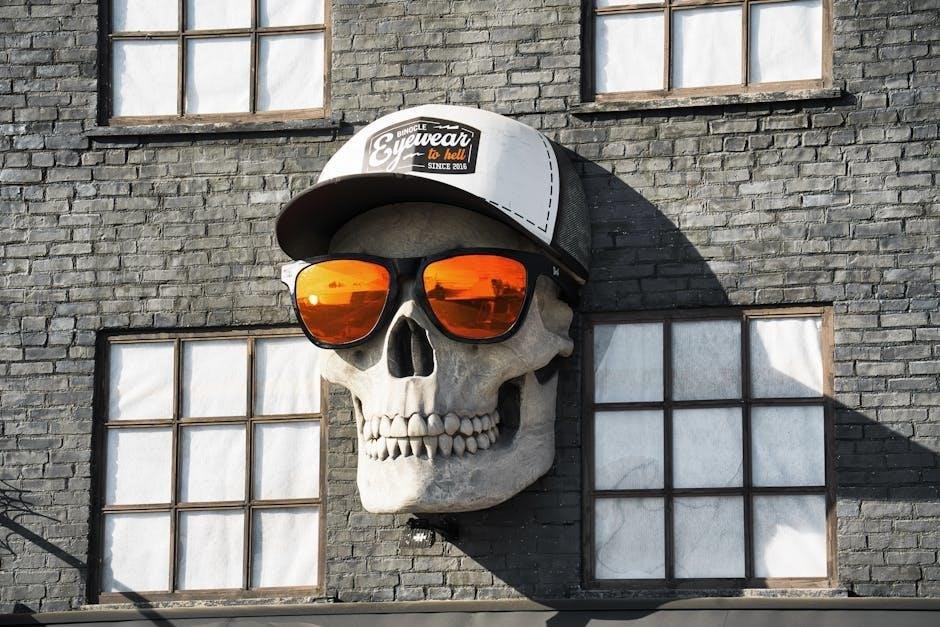Tyvek is a durable, lightweight synthetic material used in construction as a weather barrier, protecting against water, air, and moisture infiltration while improving energy efficiency.
What is Tyvek?
Tyvek is a durable, lightweight synthetic material made from polyethylene fibers, known for its high strength and resistance to water, air, and moisture penetration. It is widely used in construction as a weather barrier, providing superior protection against the elements while maintaining breathability. Tyvek acts as a vapor barrier, preventing moisture buildup inside walls, which can lead to mold and structural damage. Its unique composition allows it to withstand harsh weather conditions and pests, making it a reliable choice for exterior applications. Available in various grades, Tyvek is also used in clothing and packaging due to its tear-resistance and versatility. DuPont, the manufacturer, offers a 10-year warranty for Tyvek products when installed as part of their weatherization system.
Importance of Tyvek in Construction
Tyvek plays a crucial role in construction by providing a reliable barrier against water, air, and moisture infiltration, ensuring buildings remain dry and energy-efficient. Its breathability prevents moisture buildup inside walls, reducing the risk of mold and structural damage. Tyvek also enhances thermal performance by minimizing air leakage, which improves comfort and lowers energy costs. Its durability and resistance to pests and weathering make it a long-lasting solution for exterior applications. As part of DuPont’s weatherization system, Tyvek is backed by a 10-year warranty, offering peace of mind for contractors and homeowners. Its versatility and effectiveness have made it a cornerstone in modern building practices, ensuring better protection and longevity for structures.
Preparation for Tyvek Installation

Ensure the surface is clean, dry, and free from debris. Check for structural integrity and address any damage to prevent installation issues and ensure optimal performance.
Tools and Materials Needed
To install Tyvek effectively, you will need specific tools and materials. Start with a utility knife or Tyvek-specific scissors for precise cutting. Use DuPont Tyvek tape for sealing seams and edges, ensuring a watertight bond. Install Tyvek staples or appropriate fasteners to secure the membrane firmly to the surface. A measuring tape and chalk line will help mark the area accurately. Brushes or brooms are essential for cleaning the surface before installation. Safety gear, including gloves and ladders, is crucial for safe working conditions. Additional materials like weather-resistant caps and flashing for openings may be required to complete the installation properly.
Surface Requirements and Preparation
Proper surface preparation is crucial for a successful Tyvek installation. Ensure the surface is clean, dry, and free from debris, oils, or old adhesives. Use a pressure washer or stiff brush to remove dirt and contaminants. The substrate must be smooth and even; fill any gaps or uneven areas with appropriate sealants or putty. Allow the surface to dry completely before proceeding. Check for any structural damage or rot and repair it beforehand. Ensure all windows, doors, and openings are framed correctly and ready for weatherproofing. A well-prepared surface ensures optimal adhesion and performance of the Tyvek membrane, preventing future issues like air leaks or water damage.

Tyvek Installation Steps
Tyvek installation involves applying the membrane, securing it tightly, wrapping openings, and sealing seams to ensure a weather-tight seal and optimal performance.
Applying the Tyvek Membrane
Begin by unrolling the Tyvek membrane and aligning it with the wall or roof surface, starting from the bottom and working upwards. Ensure the material is smooth and wrinkle-free, cutting it to size with a utility knife if necessary. Overlap edges by 6 inches and use Tyvek tape to seal them. For walls, staple the membrane to studs or rafters, spacing fasteners 12-18 inches apart. Avoid over-tightening to prevent stretching or tearing. For roofs, secure the membrane with screws or nails, ensuring it lies flat and evenly. If installing in multiple layers, stagger joints for optimal performance. This process ensures a continuous weather barrier, protecting against moisture and air infiltration effectively.
Securing the Membrane
To ensure a tight seal, apply Tyvek tape along all edges and seams, pressing firmly to prevent air leaks. Use staples or plastic cap fasteners spaced every 12-18 inches to secure the membrane to studs or rafters. For roofs, use screws or nails with washers to prevent tearing. Overlap edges by at least 6 inches and seal with Tyvek tape for a watertight bond. Avoid stretching the membrane, as this can lead to tears or reduced performance. For windows and doors, cut the membrane to fit snugly around openings and seal with tape. Proper securing ensures the membrane remains intact and provides long-term protection against weather elements.
Wrapping Openings and Details

When installing Tyvek, ensure all openings like windows, doors, and vents are properly wrapped to maintain weather tightness. Cut the membrane to fit snugly around openings, leaving extra material for sealing. Apply Tyvek tape around the edges of openings to create a watertight seal. For details such as joints, corners, and edges, overlap the membrane by at least 6 inches and secure with staples or fasteners. Use additional tape to reinforce these areas, ensuring no gaps remain. Avoid stretching the material, as it may lead to tears. Properly wrapping openings and details ensures the membrane performs effectively, preventing air and water infiltration while maintaining structural integrity.
Sealing Seams and Edges
Sealing seams and edges is a critical step in Tyvek installation to ensure airtight and watertight performance. Use Tyvek tape to seal all seams, overlapping the membrane by at least 6 inches. Apply pressure to ensure a strong bond; For vertical seams, start at the bottom and work upward to prevent water from seeping behind the tape. At edges, fold the membrane over and secure it with staples or fasteners before sealing with tape. Ensure no gaps or wrinkles remain, as these can compromise the barrier’s effectiveness. Properly sealed seams and edges prevent air leaks and water infiltration, maintaining the integrity of the weather barrier system. Regular inspection of these areas is recommended to ensure long-term performance.
Post-Installation Inspection and Repairs
After installation, inspect the Tyvek membrane for tears or gaps. Ensure all seams are tightly sealed and fasteners are secure. Repair any damage promptly to maintain its weather-resistant performance and warranty coverage.
Inspecting the Installed Membrane
After installing Tyvek, conduct a thorough inspection to ensure proper coverage and integrity. Check for any tears, gaps, or wrinkles in the membrane. Verify that all seams are tightly sealed and aligned correctly. Inspect areas around windows, doors, and other openings to ensure they are properly wrapped and sealed. Use a blower door test to check for air leaks, which can help identify any hidden gaps. Ensure all fasteners are securely in place and not over-tightened, which could damage the material. Document any issues and address them immediately to maintain the weather-tight performance of the Tyvek membrane and uphold its warranty conditions.
Identifying and Repairing Damage
To ensure the longevity of Tyvek, inspect the membrane regularly for damage such as tears, punctures, or gaps at seams. Look for areas exposed to heavy weather or debris impact. For minor damage, clean the area thoroughly with a mild detergent and water. Apply a Tyvek-specific repair tape, pressing firmly to ensure adhesion. For larger tears, cut a patch slightly larger than the damage and secure it with tape, overlapping edges by at least 6 inches. Always follow the manufacturer’s instructions for repair materials. Addressing damage promptly prevents water infiltration and maintains the membrane’s integrity. Regular inspections and timely repairs are crucial for upholding the warranty and performance of the Tyvek system.

Maintenance and Longevity

Regular cleaning and inspections ensure Tyvek’s durability. Promptly repair damages, and follow manufacturer guidelines to maintain its protective qualities and extend its lifespan effectively.
Regular Maintenance Tips
Regular maintenance ensures Tyvek’s performance and longevity. Inspect the membrane annually for tears, gaps, or signs of wear. Clean it gently with a soft brush or cloth to remove dirt and debris. Avoid using harsh chemicals or abrasive materials that could damage the material. Ensure all seams and edges remain tightly sealed. Trim nearby vegetation to prevent scratches from branches. Address any damage promptly to prevent water infiltration. Keep the surrounding area clear of debris to maintain airflow and prevent moisture buildup. Following these tips helps preserve the integrity of your Tyvek weather barrier and ensures it continues to protect your home effectively over time.

Ensuring Long-Term Performance

To ensure the long-term performance of Tyvek, adhere to manufacturer guidelines for installation and maintenance. Proper ventilation in the building envelope is essential to prevent moisture buildup, which can compromise the membrane. Regularly inspect and repair any damaged areas to maintain its weather-tight seal. Avoid using incompatible materials that may degrade Tyvek over time. Ensure all seams and edges are tightly sealed and reinforced as needed. Address any issues promptly to prevent long-term damage. By following these practices, you can ensure Tyvek continues to provide reliable protection against the elements, maintaining its durability and performance for years to come.

By following this guide, you ensure a durable, weather-tight installation, maximizing Tyvek’s benefits for long-term protection and energy efficiency in your home or building.
Final Checklist and Completion
After completing the Tyvek installation, ensure all seams are sealed, edges are secure, and openings are properly wrapped. Verify that the membrane is tightly fitted without wrinkles or gaps. Inspect all critical areas, such as windows, doors, and joints, for any potential leaks or damage. Confirm that all necessary tools and materials were used correctly, and no steps were skipped. Schedule a professional inspection if required. Proper completion ensures the warranty remains valid and the Tyvek system performs optimally. This final checklist guarantees a weather-tight seal, energy efficiency, and long-term protection for your building.
Troubleshooting Common Issues
During Tyvek installation, common issues include air leaks, wrinkles, or tears in the membrane. To address these, inspect the membrane for gaps or damage. Ensure all seams are properly sealed with compatible tape, as improper sealing can lead to water infiltration. For wrinkles, smooth the material carefully to avoid stretching or tearing. If tears occur, repair them immediately using Tyvek patches and adhesive. Verify that all fasteners are securely attached and spaced correctly. Addressing these issues promptly ensures the integrity of the weather barrier and prevents future problems. Regular inspections and timely repairs are essential for maintaining the performance and longevity of the Tyvek system.